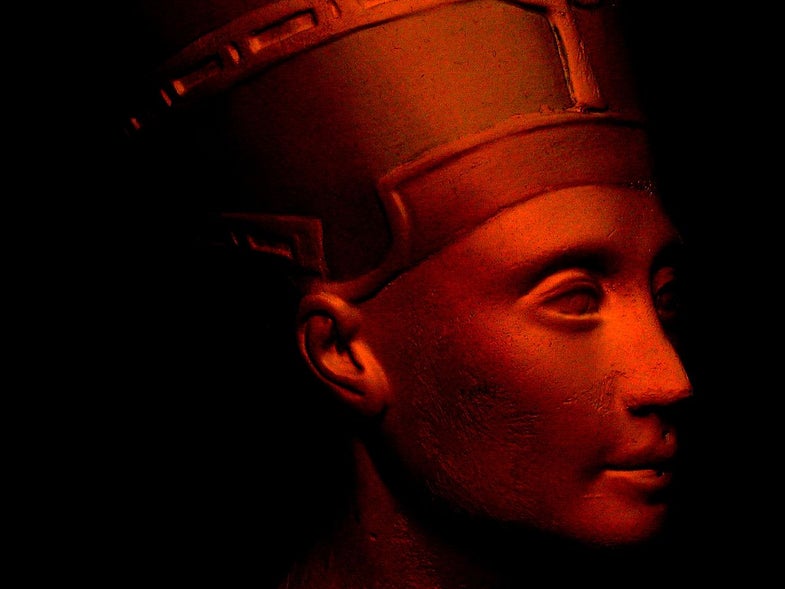Artists Likely Faked Surreptitious Scan Of Nefertiti Bust
Busted, again

Let me be the first to say: we failed to Kinect the dots. Last month, a video purporting to show an artist covertly scanning the bust of Nefertiti in the Neues Museum in Berlin circled the internet. The story first appeared on Hyperallergic, was covered by many outlets including Popular Science, and even made it to The New York Times. An investigation by multimedia artist and 3D-scanning consultant Cosmo Wenman confirms what many scanners and modellers suspected about the covert scanning: it’s a fake, it’s all fake.
They are two big giveaways about the scan. The first is that Kinect scanners, like the one shown in the video covertly tucked under a scarf, produce lower quality scans than the file released. (Artist Kyle McDonald was the first to bring this to our attention). The second is that there already exists a scan of the bust of Nefertiti, created by German scanning company Trigon Art for the Neues Museum.
From Wenman’s post:
Further materials, including an interview with the artist who claimed to make the covert scan, refer to an unnamed person who supposedly took the scan and processed it for the artist. According to Wenman’s investigation, no one so far has contacted this unnamed party.
So where does that leave us? The artists hoped to spark a conversation on artifacts, and especially on who gets to use data built from the prizes of antiquity. there could be a transformative role for museums in ushering artifacts into accessible, digital formats. “ I believe that with 3D scanning and 3D printing, private collectors and museums have an unprecedented opportunity to recast themselves as living engines of cultural creation,” Wenman writes, before concluding:
